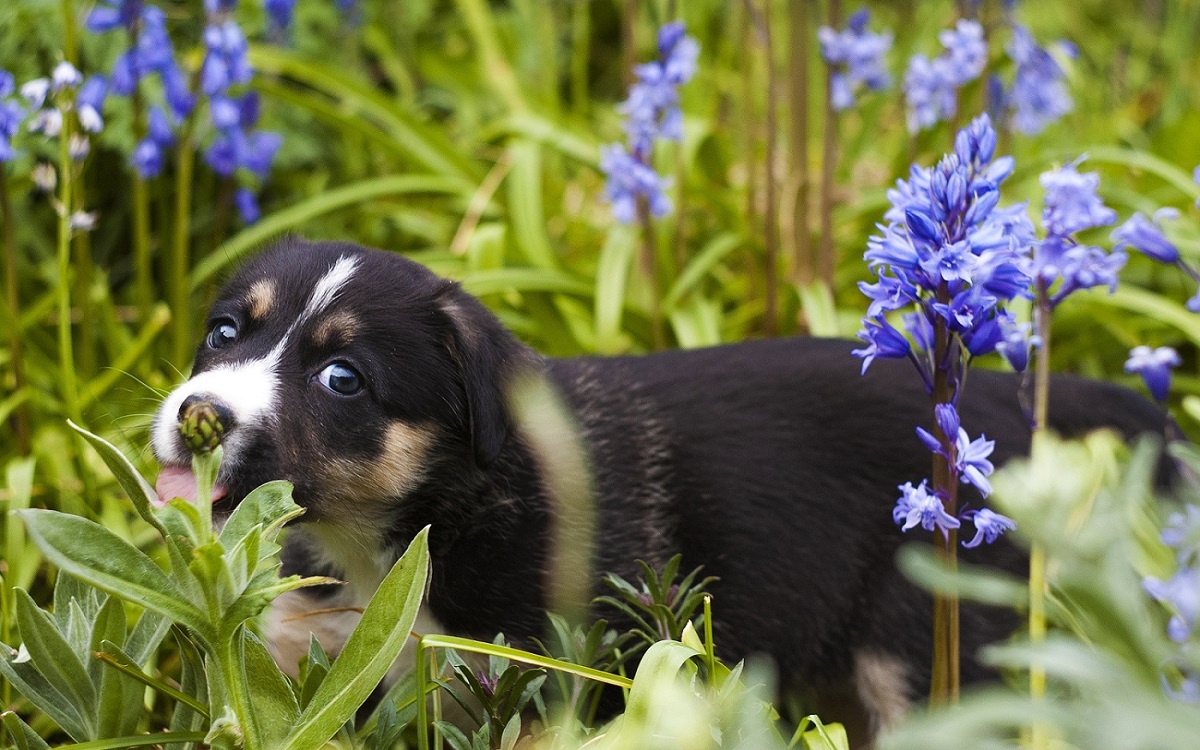This area is home to some of the most magnificent gardens and landscaping in New England. If you are an avid gardener and you have pets who also enjoy your yard, we recommend keeping the following six things in mind as you exercise your green thumb this year.
1. Some plants are poisonous to dogs and cats
Bulb plants (daffodils, tulips, lilies), foxgloves (digitalis), and many flowering shrubs (azaleas, rhododendrons, hydrangeas) are just some of the plants that pose a toxic hazard to your pet. While most mature dogs will leave plants alone, puppies and cats are notorious for chewing on vegetation, whether it's healthy for them or not! If you have a furry friend that likes to snack on your plants, it's a good idea to avoid planting toxic annuals and blockade existing perrenials that may be dangerous. Want to learn more? Both the ASPCA and Cornell provide excellent guides to poisonous plants.
2. Beware of plants with burrs and awns
The sharp seeds of many ornamental grasses can get stuck in paws, ears, eyes, and noses, so make sure to block access to these plants during seeding season. If your pet does have a run-in with grass awns, be sure to brush them carefully with a fine-toothed brush or comb and do a full body check to make sure no seeds have snuck through and made their homes on your pet. We recommend checking inside ears, between paws, in the groin, in armpits, and under the tail to make sure you've successfully removed all the seeds from your pet. Do not allow your pet to remove the seeds themselves, as they can become stuck in the mouth, throat, or intestines, causing significant injury.
3. Choose your pesticides carefully
Slug and ant bait is especially attractive to dogs because of its sweet smell, and ingesting a sufficient quantity can cause a seizure-like condition and result in heat stroke or even death. Make sure all pesticides are either applied and allowed to soak in, or kept in pet-proof containers off the ground. Even natural repellants can pose problems for our pets. For example, Coco Mulch contains the same active ingredient that makes chocolate toxic to dogs.
4. Secure that compost!
Compost is often the secret ingredient to the most beautiful gardens, and we love that it keeps food waste from filling up our landfills. Unfortunately, the smell of of rotting fruits and vegetables can prove irresistible to some dogs. This becomes a problem because the molds that help produce that lovely compost can contain tremorogenic mycotoxins, which will lead to seizure-like illness in dogs and cats if eaten. Dogs also love to steal large pits, watermelon rinds, and corn cobs from compost bins, which are a common cause of intestinal obstruction in dogs. To steer clear of these hazards, be sure to avoid open compost piles and keep your compost in a secure bin or tumbler (you'll get better compost that way, too!).
5. Beware of mushrooms
Unless you're a mushroom expert, get those potentially toxic fungi out of your yard as soon as you notice them. Most mushrooms in this area will only cause drooling, vomiting, and diarrhea, but some can lead to liver failure, neurologic signs, or even death. If you think your pet has eaten a mushroom, please call us or the emergency staff at BluePearl right away.
6. Cats can enjoy nature too!
It's true that cats live longer, healthier lives when kept indoors. However, some cats really thrive when allowed outside. If you have a nature-loving cat, consider taking them out on a harness and leash, or if you want to really go above and beyond, consider building a cat aviary in your backyard. If your cat does venture outside, remember to use a preventative such as Revolution to protect your kitty from fleas and ticks. If the outdoors are not your cat's cup of tea but you want to provide a little bit of outdoor amusement, you can also bring the wild outdoors inside by hanging a bird feeder outside of your cat's favorite window. Your cat and the birds will thank you!
Wishing you all a happy and healthy spring!
The CVH Team

